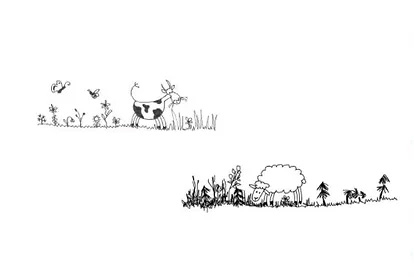
Grazing, trampling, dung and urine change the structure, species composition and diversity of plant communities. The stands are primarily managed for timber production, not for continuous grazing. We expect that grazing in young forest stands helps to reduce the competition for light, while trampling and browsing can damage saplings.
We study how cattle and sheep grazing in productive forest affect abundance and diversity of flowering plants and pollinators, sward height, and recruitment and growth of young trees.


